Leo Tolstoy
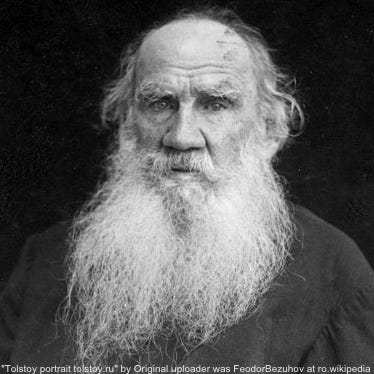
(1828-1910)

Who Was Leo Tolstoy?
In the 1860s, Russian author Leo Tolstoy wrote his first great novel, War and Peace . In 1873, Tolstoy set to work on the second of his best-known novels, Anna Karenina . He continued to write fiction throughout the 1880s and 1890s. One of his most successful later works was The Death of Ivan Ilyich .
On September 9, 1828, writer Leo Tolstoy was born at his family's estate, Yasnaya Polyana, in the Tula Province of Russia. He was the youngest of four boys. When Tolstoy's mother died in 1830, his father's cousin took over caring for the children. When their father, Count Nikolay Tolstoy, died just seven years later, their aunt was appointed their legal guardian. When the aunt passed away, Tolstoy and his siblings moved in with a second aunt, in Kazan, Russia. Although Tolstoy experienced a lot of loss at an early age, he would later idealize his childhood memories in his writing.
Tolstoy received his primary education at home, at the hands of French and German tutors. In 1843, he enrolled in an Oriental languages program at the University of Kazan. There, Tolstoy failed to excel as a student. His low grades forced him to transfer to an easier law program. Prone to partying in excess, Tolstoy ultimately left the University of Kazan in 1847, without a degree. He returned to his parents' estate, where he made a go at becoming a farmer. He attempted to lead the serfs, or farmhands, in their work, but he was too often absent on social visits to Tula and Moscow. His stab at becoming the perfect farmer soon proved to be a failure. He did, however, succeed in pouring his energies into keeping a journal — the beginning of a lifelong habit that would inspire much of his fiction.
As Tolstoy was flailing on the farm, his older brother, Nikolay, came to visit while on military leave. Nikolay convinced Tolstoy to join the Army as a junker, south in the Caucasus Mountains, where Nikolay himself was stationed. Following his stint as a junker, Tolstoy transferred to Sevastopol in Ukraine in November 1854, where he fought in the Crimean War through August 1855.
Early Works
During quiet periods while Tolstoy was a junker in the Army, he worked on an autobiographical story called Childhood . In it, he wrote of his fondest childhood memories. In 1852, Tolstoy submitted the sketch to The Contemporary , the most popular journal of the time. The story was eagerly accepted and became Tolstoy's very first published work.
After completing Childhood , Tolstoy started writing about his day-to-day life at the Army outpost in the Caucasus. However, he did not complete the work, entitled The Cossacks , until 1862, after he had already left the Army.
Tolstoy still managed to continue writing while at battle during the Crimean War. During that time, he composed Boyhood (1854), a sequel to Childhood , the second book in what was to become Tolstoy's autobiographical trilogy. In the midst of the Crimean War, Tolstoy also expressed his views on the striking contradictions of war through a three-part series, Sevastopol Tales . In the second Sevastopol Tales book, Tolstoy experimented with a relatively new writing technique: Part of the story is presented in the form of a soldier's stream of consciousness.
Once the Crimean War ended and Tolstoy left the Army, he returned to Russia. Back home, the burgeoning author found himself in high demand on the St. Petersburg literary scene. Stubborn and arrogant, Tolstoy refused to ally himself with any particular intellectual school of thought. Declaring himself an anarchist, he made off to Paris in 1857. Once there, he gambled away all of his money and was forced to return home to Russia. He also managed to publish Youth , the third part of his autobiographical trilogy, in 1857.
Back in Russia in 1862, Tolstoy produced the first of a 12 issue-installment of the journal Yasnaya Polyana , marrying a doctor's daughter named Sofya Andreyevna Bers that same year.
'War and Peace'
Residing at Yasnaya Polyana with his wife and children, Tolstoy spent the better part of the 1860s toiling over his first great novel, War and Peace . A portion of the novel was first published in the Russian Messenger in 1865, under the title "The Year 1805." By 1868, he had released three more chapters and a year later, the novel was complete. Both critics and the public were buzzing about the novel's historical accounts of the Napoleonic Wars, combined with its thoughtful development of realistic yet fictional characters. The novel also uniquely incorporated three long essays satirizing the laws of history. Among the ideas that Tolstoy extols in War and Peace is the belief that the quality and meaning of one's life is mainly derived from his day-to-day activities.
'Anna Karenina'
Following the success of War and Peace , in 1873, Tolstoy set to work on the second of his best-known novels, Anna Karenina . Like War and Peace , Anna Karenina fictionalized some biographical events from Tolstoy's life, as was particularly evident in the romance of the characters Kitty and Levin, whose relationship is said to resemble Tolstoy's courtship with his own wife.
The first sentence of Anna Karenina is among the most famous lines of the book: "All happy families resemble one another, each unhappy family is unhappy in its own way." Anna Karenina was published in installments from 1873 to 1877, to critical and public acclaim. The royalties that Tolstoy earned from the novel contributed to his rapidly growing wealth.
Philosophy, Religious Conversion
Despite the success of Anna Karenina , following the novel's completion, Tolstoy suffered a spiritual crisis and grew depressed. Struggling to uncover the meaning of life, Tolstoy first went to the Russian Orthodox Church but did not find the answers he sought there. He came to believe that Christian churches were corrupt and, in lieu of organized religion, developed his own beliefs. He decided to express those beliefs by founding a new publication called The Mediator in 1883.
As a consequence of espousing his unconventional — and therefore controversial — spiritual beliefs, Tolstoy was ousted by the Russian Orthodox Church. He was even watched by the secret police. When Tolstoy's new beliefs prompted his desire to give away his money, his wife strongly objected. The disagreement put a strain on the couple's marriage until Tolstoy begrudgingly agreed to a compromise: He conceded to granting his wife the copyrights — and presumably the royalties — to all of his writing predating 1881.
Later Fiction
'the death of ivan ilyich'.
In addition to his religious tracts, Tolstoy continued to write fiction throughout the 1880s and 1890s. Among his later works' genres were moral tales and realistic fiction. One of his most successful later works was the novella The Death of Ivan Ilyich , written in 1886. In Ivan Ilyich , the main character struggles to come to grips with his impending death. The title character, Ivan Ilyich, comes to the jarring realization that he has wasted his life on trivial matters, but the realization comes too late.
In 1898, Tolstoy wrote Father Sergius , a work of fiction in which he seems to criticize the beliefs that he developed following his spiritual conversion. The following year, he wrote his third lengthy novel, Resurrection . While the work received some praise, it hardly matched the success and acclaim of his previous novels. Tolstoy's other late works include essays on art, a satirical play called The Living Corpse that he wrote in 1890, and a novella called Hadji-Murad (written in 1904), which was discovered and published after his death.
Elder Years
Over the last 30 years of his life, Tolstoy established himself as a moral and religious leader. His ideas about nonviolent resistance to evil influenced the likes of social leader Mahatma Gandhi .
Also during his later years, Tolstoy reaped the rewards of international acclaim. Yet he still struggled to reconcile his spiritual beliefs with the tensions they created in his home life. His wife not only disagreed with his teachings, but she also disapproved of his disciples, who regularly visited Tolstoy at the family estate. Their troubled marriage took on an air of notoriety in the press. Anxious to escape his wife's growing resentment, in October 1910, Tolstoy, his daughter, Aleksandra, and his physician, Dr. Dushan P. Makovitski, embarked on a pilgrimage. Valuing their privacy, they traveled incognito, hoping to dodge the press, to no avail.
Death and Legacy
Unfortunately, the pilgrimage proved too arduous for the aging novelist. In November 1910, the stationmaster of a train depot in Astapovo, Russia opened his home to Tolstoy, allowing the ailing writer to rest. Tolstoy died there shortly after, on November 20, 1910. He was buried at the family estate, Yasnaya Polyana, in Tula Province, where Tolstoy had lost so many loved ones yet had managed to build such fond and lasting memories of his childhood. Tolstoy was survived by his wife and their brood of 8 children. (The couple had spawned 13 children in all, but only 10 had survived past infancy.)
To this day, Tolstoy's novels are considered among the finest achievements of literary work. War and Peace is, in fact, frequently cited as the greatest novel ever written. In contemporary academia, Tolstoy is still widely acknowledged as having possessed a gift for describing characters' unconscious motives. He is also championed for his finesse in underscoring the role of people's everyday actions in defining their character and purpose.
QUICK FACTS
- Name: Leo Tolstoy
- Birth Year: 1828
- Birth date: September 9, 1828
- Birth City: Tula Province (Yasnaya Polyana)
- Birth Country: Russia
- Gender: Male
- Best Known For: Russian author Leo Tolstoy wrote the acclaimed novels 'War and Peace,' 'Anna Karenina' and 'The Death of Ivan Ilyich,' and ranks among the world's top writers.
- Fiction and Poetry
- Astrological Sign: Virgo
- University of Kazan
- Death Year: 1910
- Death date: November 20, 1910
- Death City: Astapovo
- Death Country: Russia
We strive for accuracy and fairness.If you see something that doesn't look right, contact us !
CITATION INFORMATION
- Article Title: Leo Tolstoy Biography
- Author: Biography.com Editors
- Website Name: The Biography.com website
- Url: https://www.biography.com/authors-writers/leo-tolstoy
- Access Date:
- Publisher: A&E; Television Networks
- Last Updated: November 14, 2019
- Original Published Date: September 9, 2014
- I put men to death in war, I fought duels to slay others. I lost at cards, wasted the substance wrung from the sweat of peasants, punished the latter cruelly, rioted with loose women, and deceived men. Lying, robbery, adultery of all kinds, drunkenness, violence, and murder, all were committed by me, not one crime omitted, and yet I was not the less considered by my equals to be a comparatively moral man. Such was my life for ten years.
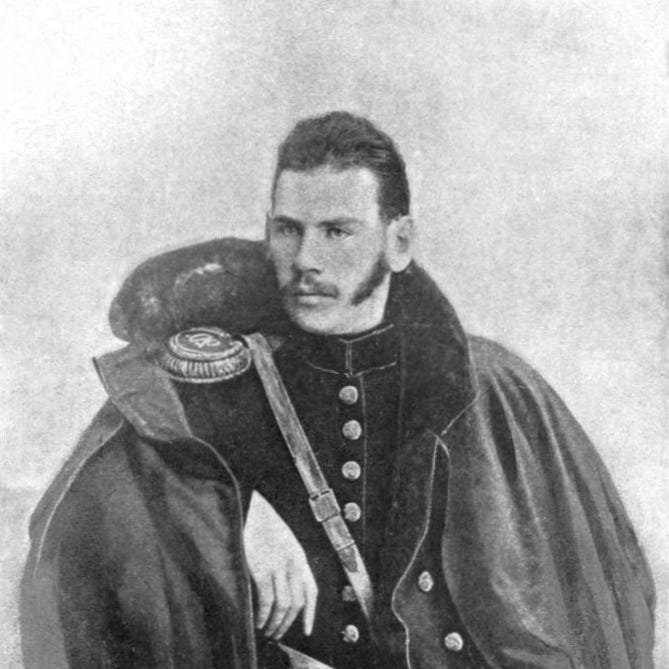
Famous Authors & Writers

The Truth Behind Edgar Allan Poe’s Terror Tales
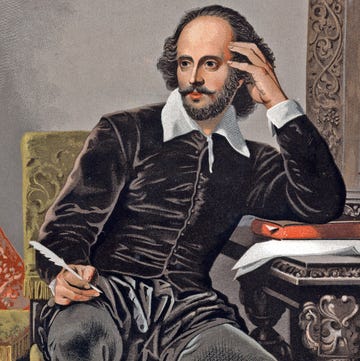
How Did Shakespeare Die?
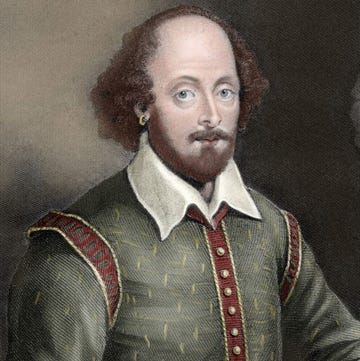
A Huge Shakespeare Mystery, Solved

Shakespeare Wrote 3 Tragedies in Turbulent Times
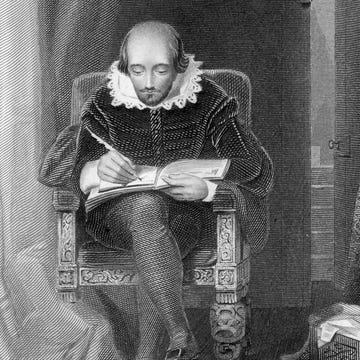
The Mystery of Shakespeare's Life and Death
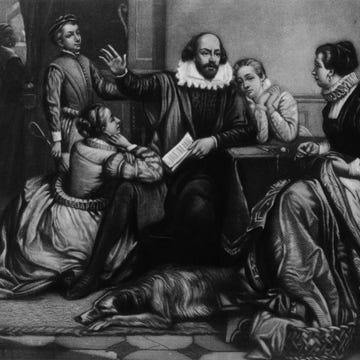
Was Shakespeare the Real Author of His Plays?
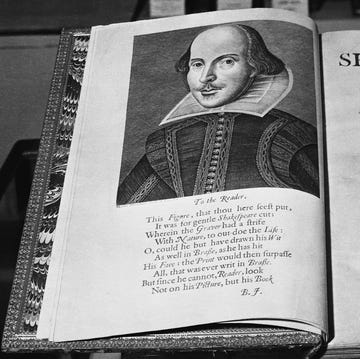
20 Shakespeare Quotes

William Shakespeare
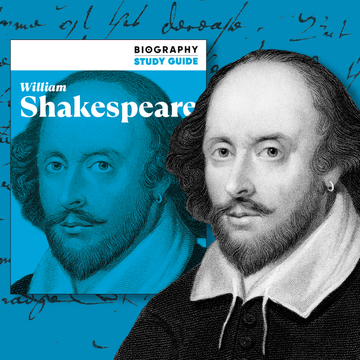
The Ultimate William Shakespeare Study Guide

Suzanne Collins
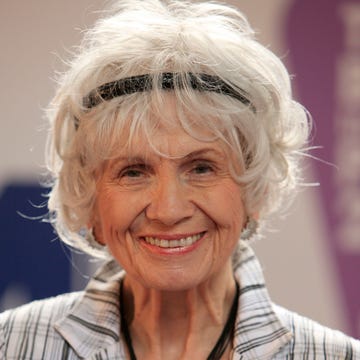
Alice Munro
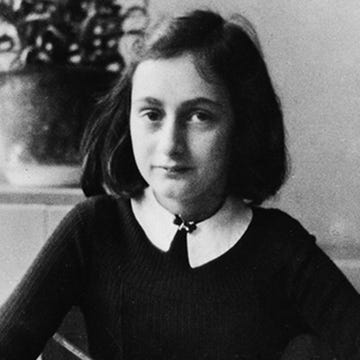
- Humanities ›
- Literature ›
- Classic Literature ›
- Authors & Texts ›
Biography of Leo Tolstoy, Influential Russian Writer
The great Russian novelist and philosophical writer
Hulton Archive / Getty Images
- Authors & Texts
- Top Picks Lists
- Study Guides
- Best Sellers
- Plays & Drama
- Shakespeare
- Short Stories
- Children's Books
:max_bytes(150000):strip_icc():format(webp)/ThoughtCo_Amanda_Prahl_webOG-48e27b9254914b25a6c16c65da71a460.jpg)
- M.F.A, Dramatic Writing, Arizona State University
- B.A., English Literature, Arizona State University
- B.A., Political Science, Arizona State University
Leo Tolstoy (September 9, 1828-November 20, 1910) was a Russian writer, best known for his epic novels . Born into an aristocratic Russian family, Tolstoy wrote realist fiction and semi-autobiographical novels before shifting into more moral and spiritual works.

Fast Facts: Leo Tolstoy
- Full Name: Count Lev Nikolayevich Tolstoy
- Known For: Russian novelist and writer of philosophical and moral texts
- Born : September 9, 1828 in Yasnaya Polyana, Russian Empire
- Parents: Count Nikolai Ilyich Tolstoy and Countess Mariya Tolstoya
- Died: November 20, 1910 in Astapovo, Russian Empire
- Education: Kazan University (began at age 16; did not complete his studies)
- Selected Works: War and Peace (1869), Anna Karenina (1878), A Confession (1880), The Death of Ivan Ilyich (1886), Resurrection (1899)
- Spouse: Sophia Behrs (m. 1862)
- Children: 13, including Count Sergei Lvovich Tolstoy, Countess Tatiana Lvona Tolstoya, Count Ilya Lvovich Tolstoy, Count Lev Lvovich Tolstoy, and Countess Alexandra Lvona Tolstoya
- Notable Quote: “There can be only one permanent revolution—a moral one; the regeneration of the inner man. How is this revolution to take place? Nobody knows how it will take place in humanity, but every man feels it clearly in himself. And yet in our world everybody thinks of changing humanity, and nobody thinks of changing himself."
Tolstoy was born into a very old Russian aristocratic family whose lineage was, quite literally, the stuff of Russian legend. According to family history, they could trace their family tree back to a legendary nobleman named Indris, who had left the Mediterranean region and arrived in Chernigov, Ukraine, in 1353 with his two sons and an entourage of approximately 3,000 people. His descendant then was nicknamed “Tolstiy,” meaning “fat,” by Vasily II of Moscow , which inspired the family name. Other historians trace the family’s origins to 14th or 16th-century Lithuania, with a founder named Pyotr Tolstoy.
He was born on the family’s estate, the fourth of five children born to Count Nikolai Ilyich Tolstoy and his wife, the Countess Maria Tolstoya. Because of the conventions of Russian noble titles, Tolstoy also bore the title of “count” despite not being his father’s eldest son. His mother died when he was 2 years old, and his father when he was 9, so he and his siblings were largely brought up by other relatives. In 1844, at age 16, he began studying law and languages at Kazan University, but was apparently a very poor student and soon left to return to a life of leisure.
Tolstoy did not marry until his thirties, after the death of one of his brothers hit him hard. On September 23, 1862, he married Sophia Andreevna Behrs (known as Sonya), who was only 18 at the time (16 years younger than him) and was the daughter of a doctor at court. Between 1863 and 1888, the couple had 13 children; eight survived to adulthood. The marriage was, reportedly, happy and passionate in the early days, despite Sonya’s discomfort with her husband’s wild past, but as time went on, their relationship deteriorated into deep unhappiness.
Travels and Military Experience
Tolstoy’s journey from dissolute aristocrat to socially agitating writer was shaped heavily by a few experiences in his youth; namely, his military service and his travels in Europe. In 1851, after running up significant debts from gambling, he went with his brother to join the army. During the Crimean War , from 1853 to 1856 , Tolstoy was an artillery officer and served in Sevastopol during the famous 11-month siege of the city between 1854 and 1855.
Although he was commended for his bravery and promoted to lieutenant, Tolstoy did not like his military service. The gruesome violence and heavy death toll in the war horrified him, and he left the army as soon as possible after the war ended. Along with some of his compatriots, he embarked on tours of Europe: one in 1857, and one from 1860 to 1861.
During his 1857 tour, Tolstoy was in Paris when he witnessed a public execution. The traumatic memory of that experience shifted something in him permanently, and he developed a deep loathing and mistrust of government in general. He came to believe that there was no such thing as good government, only an apparatus to exploit and corrupt its citizens, and he became a vocal advocate of non-violence. In fact, he corresponded with Mahatma Gandhi about the practical and theoretical applications of non-violence.
A later visit to Paris, in 1860 and 1861, produced further effects in Tolstoy which would come to fruition in some of his most famous works. Soon after reading Victor Hugo’s epic novel Les Miserables , Tolstoy met Hugo himself. His War and Peace was heavily influenced by Hugo, particularly in its treatment of war and military scenes. Similarly, his visit to the exiled anarchist Pierre-Joseph Proudhon gave Tolstoy the idea for his novel’s title and shaped his views on education. In 1862, he put those ideals to work, founding 13 schools for Russian peasant children in the aftermath of Alexander II’s emancipation of the serfs. His schools were among the first to run on the ideals of democratic education—education which advocates democratic ideals and runs according to them–but were short-lived due to the enmity of the royalist secret police.
Early and Epic Novels (1852-1877)
- Childhood (1852)
- Boyhood (1854)
- Youth (1856)
- "Sevastopol Sketches" (1855–1856)
- The Cossacks (1863)
- War and Peace (1869)
- Anna Karenina (1877)
Between 1852 and 1856, Tolstoy focused on a trio of autobiographical novels: Childhood , Boyhood , and Youth . Later in his career, Tolstoy criticized these novels as being overly sentimental and unsophisticated, but they’re quite insightful about his own early life. The novels are not direct autobiographies, but instead tell the story of a rich man’s son who grows up and slowly realizes that there is an insurmountable gap between him and the peasants who live on the land owned by his father. He also wrote a trio of semi-autobiographical short stories, Sevastopol Sketches , which depicted his time as an army officer during the Crimean War .
For the most part, Tolstoy wrote in the realist style, attempting to accurately (and with detail) convey the lives of the Russians he knew and observed. His 1863 novella, The Cossacks , provided a close look at the Cossack people in a story about a Russian aristocrat who falls in love with a Cossack girl. Tolstoy’s magnum opus was 1869’s War and Peace , a massive and sprawling narrative encompassing nearly 600 characters (including several historical figures and several characters strongly based on real people Tolstoy knew). The epic story deals with Tolstoy’s theories about history, spanning many years and moving through wars , family complications, romantic intrigues, and court life, and ultimately intended as an exploration of the eventual causes of the 1825 Decembrist revolt . Interestingly, Tolstoy did not consider War and Peace to be his first “real” novel; he considered it a prose epic, not a true novel .
Tolstoy believed his first true novel to be Anna Karenina , published in 1877. The novel follows two major plotlines which intersect: an unhappily married aristocratic woman’s doomed affair with a cavalry officer, and a wealthy landowner who has a philosophical awakening and wants to improve the peasantry’s way of life. It covers personal themes of morality and betrayal, as well as larger social questions of the changing social order, contrasts between city and rural life, and class divisions. Stylistically, it lies at the juncture of realism and modernism.
Musings on Radical Christianity (1878-1890)
- A Confession (1879)
- Church and State (1882)
- What I Believe (1884)
- What Is to Be Done? (1886)
- The Death of Ivan Ilyich (1886)
- On Life (1887)
- The Love of God and of One's Neighbour (1889)
- The Kreutzer Sonata (1889)
After Anna Karenina , Tolstoy began further developing the seeds of moral and religious ideas in his earlier works into the center of his later work. He actually criticized his own earlier works, including War and Peace and Anna Karenina , as not being properly realistic. Instead, he began developing a radical, anarcho-pacifist, Christian worldview that explicitly rejected both violence and the rule of the state.
Between 1871 and 1874, Tolstoy tried his hand at poetry, branching out from his usual prose writings. He wrote poems about his military service, compiling them with some fairy tales in his Russian Book for Reading , a four-volume publication of shorter works that was intended for an audience of schoolchildren. Ultimately, he disliked and dismissed poetry.
Two more books during this period, the novel The Death of Ivan Ilyich (1886) and the non-fiction text What Is to Be Done? (1886), continued developing Tolstoy’s radical and religious views, with harsh critiques of the state of Russian society. His Confession (1880) and What I Believe (1884) declared his Christian beliefs, his support of pacifism and complete non-violence, and his choice of voluntary poverty and asceticism.
Political and Moral Essayist (1890-1910)
- The Kingdom of God Is Within You (1893)
- Christianity and Patriotism (1894)
- The Deception of the Church (1896)
- Resurrection (1899)
- What Is Religion and What is its Essence? (1902)
- The Law of Love and the Law of Violence (1908)
In his later years, Tolstoy wrote almost solely about his moral, political, and religious beliefs. He developed a firm belief that the best way to live was to strive for personal perfection by following the commandment to love God and love one’s neighbor, rather than following the rules set by any church or government on earth. His thoughts eventually garnered a following, the Tolstoyans, who were a Christian anarchist group devoted to living out and spreading Tolstoy’s teachings.
By 1901, Tolstoy’s radical views led to his excommunication from the Russian Orthodox Church , but he was unperturbed. In 1899, he had written Resurrection , his final novel, which critiqued the human-run church and state and attempted to expose their hypocrisy. His criticism extended to many of the foundations of society at the time, including private property and marriage. He hoped to continue spreading his teachings throughout Russia.
For the last two decades of his life, Tolstoy largely focused on essay writing. He continued advocating for his anarchist beliefs while also cautioning against the violent revolution espoused by many anarchists . One of his books, The Kingdom of God Is Within You , was one of the formative influences on Mahatma Gandhi’s theory of nonviolent protest, and the two men actually corresponded for a year, between 1909 and 1910. Tolstoy also wrote significantly in favor of the economic theory of Georgism, which posited that individuals should own the value they produce, but society should share in the value derived from the land itself.
Literary Styles and Themes
In his earlier works, Tolstoy was largely concerned with depicting what he saw around him in the world, particularly at the intersection of the public and private spheres. War and Peace and Anna Karenina , for instance, both told epic stories with serious philosophical underpinnings. War and Peace spent significant time criticizing the telling of history, arguing that it’s the smaller events that make history, not the huge events and famous heroes. Anna Karenina , meanwhile, centers on personal themes such as betrayal, love, lust and jealousy, as well as turning a close eye on the structures of Russian society, both in the upper echelons of the aristocracy and among the peasantry.
Later in life, Tolstoy’s writings took a turn into the explicitly religious, moral, and political. He wrote at length about his theories of pacifism and anarchism, which tied into his highly individualistic interpretation of Christianity as well. Tolstoy’s texts from his later eras were no longer novels with intellectual themes, but straightforward essays, treatises, and other non-fiction work. Asceticism and the work of inner perfection were among the things Tolstoy advocated for in his writings.
Tolstoy did, however, get politically involved, or at least publicly expressed his opinions on major issues and conflicts of the day. He wrote in support of the Boxer rebels during the Boxer Rebellion in China, condemning the violence of the Russian, American, German, and Japanese troops. He wrote on revolution, but he considered it an internal battle to be fought within individual souls, rather than a violent overthrow of the state.
Over the course of his life, Tolstoy wrote in a wide variety of styles. His most famous novels contained sweeping prose somewhere between the realist and modernist styles, as well as a particular style of seamlessly sweeping from quasi-cinematic, detailed but massive descriptions to the specifics of characters’ perspectives. Later, as he shifted away from fiction into non-fiction, his language became more overtly moral and philosophical.
By the end of his life, Tolstoy had reached a breaking point with his beliefs, his family, and his health. He finally decided to separate from his wife Sonya, who vehemently opposed many of the ideas and was intensely jealous of the attention he gave his followers over her. In order to escape with the least amount of conflict, he slipped away secretively, leaving home in the middle of the night during the cold winter.
His health had been declining, and he had renounced the luxuries of his aristocratic lifestyle. After spending a day traveling by train, his destination somewhere in the south, he collapsed due to pneumonia at the Astapovo railway station. Despite the summoning of his personal doctors, he died that day, on November 20, 1910. When his funeral procession went through the streets, police tried to limit access, but they were unable to stop thousands of peasants from lining the streets—although some were there not because of devotion to Tolstoy, but merely out of curiosity about a nobleman who had died.
In many ways, Tolstoy’s legacy cannot be overstated. His moral and philosophical writings inspired Gandhi, which means that Tolstoy’s influence can be felt in contemporary movements of non-violent resistance. War and Peace is a staple on countless lists of the best novels ever written, and it has remained highly praised by the literary establishment since its publication.
Tolstoy’s personal life, with its origins in the aristocracy and his eventual renunciation of his privileged existence, continues to fascinate readers and biographer, and the man himself is as famous as his works. Some of his descendants left Russia in the early 20th century, and many of them continue to make names for themselves in their chosen professions to this day. Tolstoy left behind a literary legacy of epic prose, carefully drawn characters, and a fiercely felt moral philosophy, making him an unusually colorful and influential author across the years.
- Feuer, Kathryn B. Tolstoy and the Genesis of War and Peace . Cornell University Press, 1996.
- Troyat, Henri. Tolstoy . New York: Grove Press, 2001.
- Wilson, A.N. Tolstoy: A Biography . W. W. Norton Company, 1988.
- Papa Panov's Special Christmas: Synopsis and Analysis
- A Reading List of the Best 19th Century Novels
- Biography of Vladimir Nabokov, Russian-American Novelist
- The Hunchback of Notre-Dame (1831) by Victor Hugo
- The Life and Works of Honoré de Balzac, French Novelist
- What Were Mark Twain's Inventions?
- Biography of Samuel Johnson, 18th Century Writer and Lexicographer
- Biography of Joseph Conrad, Author of Heart of Darkness
- Biography of Saul Bellow, Canadian-American Author
- Biography of Washington Irving, Father of the American Short Story
- Hans Christian Andersen Biography
- Biography of Fyodor Dostoevsky, Russian Novelist
- Ralph Waldo Emerson: American Transcendentalist Writer and Speaker
- Biography of F. Scott Fitzgerald, Writer of the Jazz Age
- Biography of Victor Hugo, French Writer
- Biography of C.S. Lewis, British Writer
- World Biography
Leo Tolstoy Biography
Born: August 28, 1828 Tula Province, Russia Died: November 9, 1910 Astapovo, Russia Russian novelist
The Russian novelist and moral philosopher (person who studies good and bad in relation to human life) Leo Tolstoy ranks as one of the world's great writers, and his War and Peace has been called the greatest novel ever written.
Early years
Leo (Lev Nikolayevich) Tolstoy was born at Yasnaya Polyana, his family's estate, on August 28, 1828, in Russia's Tula Province, the youngest of four sons. His mother died when he was two years old, whereupon his father's distant cousin Tatyana Ergolsky took charge of the children. In 1837 Tolstoy's father died, and an aunt, Alexandra Osten-Saken, became legal guardian of the children. Her religious dedication was an important early influence on Tolstoy. When she died in 1840, the children were sent to Kazan, Russia, to another sister of their father, Pelageya Yushkov.
Tolstoy was educated at home by German and French tutors. He was not a particularly exceptional student but he was good at games. In 1843 he entered Kazan University. Planning on a diplomatic career, he entered the faculty of Oriental languages. Finding these studies too demanding, he switched two years later to studying law. Tolstoy left the university in 1847 without taking his degree.
Tolstoy returned to Yasnaya Polyana, determined to become a model farmer and a "father" to his serfs (unpaid farmhands). His charity failed because of his foolishness in dealing with the peasants (poor, working class) and because he spent too much time socializing in Tula and Moscow. During this time he first began making amazingly honest diary entries, a practice he maintained until his death. These entries provided much material for his fiction, and in a very real sense the collection is one long autobiography.
Army life and early literary career
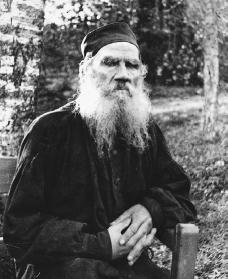
From November 1854 to August 1855 Tolstoy served in the battered fortress at Sevastopol in southern Ukraine. He had requested transfer to this area, a sight of one of the bloodiest battles of the Crimean War (1853–1956; when Russia battled England and France over land). As he directed fire from the Fourth Bastion, the hottest area in the conflict for a long while, Tolstoy managed to write Youth, the second part of his autobiographical trilogy. He also wrote the three Sevastopol Tales at this time, revealing the distinctive Tolstoyan vision of war as a place of unparalleled confusion and heroism, a special space where men, viewed from the author's neutral, godlike point of view, were at their best and worst.
When the city fell, Tolstoy was asked to make a study of the artillery action during the final assault and to report with it to the authorities in St. Petersburg, Russia. His reception in the capital was a triumphant success. Because of his name, he was welcomed into the most brilliant society. Because of his stories, he was treated as a celebrity by the cream of literary society.
Golden years
In September 1862, Tolstoy married Sofya Andreyevna Bers (or Behrs), a woman sixteen years younger than himself. Daughter of a prominent Moscow doctor, Bers was beautiful, intelligent, and, as the years would show, strong-willed. The first decade of their marriage brought Tolstoy the greatest happiness; never before or after was his creative life so rich or his personal life so full. In June 1863 his wife had the first of their thirteen children.
The first portion of War and Peace was published in 1865 (in the Russian Messenger ) as "The Year 1805." In 1868 three more chapters appeared, and in 1869 he completed the novel. His new novel created a fantastic out-pouring of popular and critical reaction.
Tolstoy's War and Peace represents a high point in the history of world literature, but it was also the peak of Tolstoy's personal life. His characters represent almost everyone he had ever met, including all of his relations on both sides of his family. Balls and battles, birth and death, all were described in amazing detail. In this book the European realistic novel, with its attention to social structures, exact description, and psychological rendering, found its most complete expression.
From 1873 to 1877 Tolstoy worked on the second of his masterworks, Anna Karenina, which also created a sensation upon its publication. The concluding section of the novel was written during another of Russia's seemingly endless wars with Turkey. The novel was based partly on events that had occurred on a neighboring estate, where a nobleman's rejected mistress had thrown herself under a train. It again contained great chunks of disguised biography, especially in the scenes describing the courtship and marriage of Kitty and Levin. Tolstoy's family continued to grow, and his royalties (money earned from sales) were making him an extremely rich man.
Spiritual crisis
The ethical quest that had begun when Tolstoy was a child and that had tormented him throughout his younger years now drove him to abandon all else in order to seek an ultimate meaning in life. At first he turned to the Russian Orthodox Church, visiting the Optina-Pustyn monastery in 1877. But he found no answer.
In 1883 Tolstoy met V. G. Chertkov, a wealthy guard officer who soon became the moving force behind an attempt to start a movement in Tolstoy's name. In the next few years a new publication was founded (the Mediator ) in order to spread Tolstoy's word in tract (pamphlets) and fiction, as well as to make good reading available to the poor. In six years almost twenty million copies were distributed. Tolstoy had long been watched by the secret police, and in 1884 copies of What I Believe were seized from the printer.
During this time Tolstoy's relations with his family were becoming increasingly strained. The more of a saint he became in the eyes of the world, the more of a devil he seemed to his wife. He wanted to give his wealth away, but she would not hear of it. An unhappy compromise was reached in 1884, when Tolstoy assigned to his wife the copyright to all his works before 1881.
Tolstoy's final years were filled with worldwide acclaim and great unhappiness, as he was caught in the strife between his beliefs, his followers, and his family. The Holy Synod (the church leaders) excommunicated (kicked him out) him in 1901. Unable to endure the quarrels at home he set out on his last pilgrimage (religious journey) in October 1910, accompanied by his youngest daughter, Alexandra, and his doctor. The trip proved too much, and he died in the home of the stationmaster of the small depot at Astapovo, Russia, on November 9, 1910. He was buried at Yasnaya Polyana.
For More Information
Rancour-Laferriere, Daniel. Tolstoy on the Couch: Misogyny, Masochism, and the Absent Mother. New York: New York University Press, 1998.
Troyat, Henri. Tolstoy. Garden City, NY: Doubleday, 1967. Reprint, New York: Grove Press, 2001.
Wilson, A. N. Tolstoy. London: H. Hamilton, 1988.
User Contributions:
Comment about this article, ask questions, or add new information about this topic:.

IMAGES
VIDEO